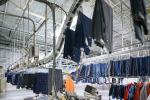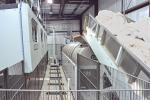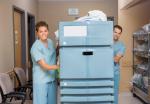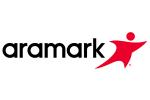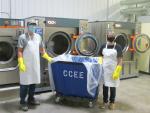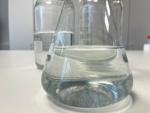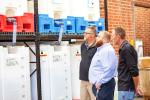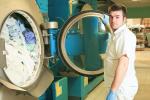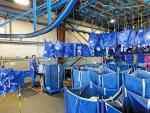CLAREMORE, Okla. — Summer and the hotter ambient temperatures it brings is quickly headed our way.
Some Southern locations are seeing temps into the 80s already. It won’t be long before most of us see the 90s, with higher temps scattered across the continent.
That brings a higher risk of fires in our business.
While fires in laundry can occur anytime—whether clean or soiled—the higher ambient temps of summer exacerbate the risk, one you can abate with prudent processes, procedures and a high level of diligence among your team.
Spontaneous combustion fires can occur in winter, as they are caused by the reaction or accumulation of reactive products or chemicals. This reaction may create heat to a level that causes the fabric to smolder and then burn.
With the higher temps of summer, the smolder gets a head start due to ambient heat, thus leading to an unexpected fire situation that can ruin your business.
Let’s review a few of the practices and processes that can help you prevent a fire:
Know what your customers are giving you back. Require your route employees to know what they are bringing back to your plant. This is important from a fire prevention perspective and a safety angle—you need to know what you’re handling.
Waxes, polishes, certain dyes and cleaners, linseed oil, and varnish—all can lead to fire no matter the time of year. They are often highly reactive with one another when they meet up in the soil bag and may not thoroughly wash out leading to a potential fire in a dryer or afterward.
Implement safe handling processes. Ink towels, towels with highly flammable products such as acetone or naphtha on them, and some of those mentioned above should be transported and stored in sealed-lid containers.
Not only might the “fragrance” during the day’s truck ride pose a hazard to your driver, but also the product is readily exposed to oxygen, one of the three legs of the fire triangle. Cut off the oxygen and your fire hazard will diminish.
Store items of concern properly at your plant. Consider storing items such as bar mops, shop towels and oily rags, floor mops and other similar products away from your building, trucks and any other valuable assets.
A minimum of 20 feet should be provided for clearance in the event of a fire. If space allows, provide several areas for smaller batch storage.
At least if there is a fire that develops overnight or over a weekend, a smaller quantity of product is lost and your building and trucks are safe.
Assure your formulas are correct. Assuming you know what your customers are giving you back, you are then able to build your wash formulas so the product comes out clean. Don’t shortcut your formulas—if the product does not come out clean and then burns later, what have you gained?
Work closely with your wash chemistry team to assure your product is getting consistently clean and is dried/cooled down properly before being placed into a cart for storage and processing.
For clean product, control your temperature. Check your cool-down temps upon exiting the dryer. Typically, products should be cooled to under 120 F. Some products and some markets may need a cool-down to under 100 F.
Check every load in the core with an infrared thermometer and record the temp. As the product sits in a cart for a while before processing, check it again in the core of the load to monitor for temperature stability.
Store towel loads in open-sided carts. Open-sided carts allow for airflow and circulation. If heat builds in the load, it can escape, whereas solid-sided carts hold it in.
Training is vitally important. Train your employees, including route drivers and sales reps, about how fires occur, why we can and cannot allow certain products to enter the facility, and what to do in the case of a fire.
There is no shortcut to training and education when it comes to fire prevention practices, processes and procedures.
The Bottom Line: Every year we see news reports of laundry fires around the country. But with proper diligence, education, practice, and process control, you can mitigate the danger, protecting your facility and your business.
RELATED STORIES
Fire! What Do I Do Now? (Part 1), Jan. 19, 2023
Fire! What Do I Do Now? (Conclusion), Jan. 24, 2023
Have a question or comment? E-mail our editor Matt Poe at [email protected].



